GIGABYTE BRIX Gaming UHD GB-BNi7HG4-950 mini-PC Review
by Ganesh T S on October 28, 2016 7:30 AM ESTBenchmarking the GPU
The GB-BNi7HG4-950 sports a GTX 950, but, it is very obvious from the size of the system as well as internal layout that we are not looking at the traditional desktop GTX 950. Our first task after setting up the system was to check out what GPU-Z thought of the GPU. At first glance, it did appear to be a standard desktop GTX 950.
However, a closer look revealed a few discrepancies. The first was the number of shaders - 1024 in the report, compared to the 768 in the standard desktop GTX 950. The second was the base/boost clocks (935/1150 MHz vs. 1024/1188 MHz), and, finally, the 4GB memory configuration (compared to the standard 2GB in the desktop version). A little more sleuthing into the AIDA64 report (that revealed a GM206M HD audio controller) led us to the GeForce GTX 965M. In effect, the 'GTX 950' in the GB-BNi7HG4-950 is nothing but a rebadged GTX 965M that can stay closer to the boost clocks for longer durations compared to notebook implementations. This is in part due to the form factor and thermal design of the system.
The GPU benchmark numbers are divided into two sections - in the first one, we will look at the gaming numbers compared to other mini-PCs that we have discussed in the previous sections. In the second, we will take a look at how the system compares to the various gaming notebooks in some selected benchmarks.
In the first section, we chose four different games (Sleeping Dogs, Tomb Raider, Bioshock Infinite and DiRT Showdown) at three different quality levels. Note that the main aim here is not to show that the 'GTX 950' can play the latest and greatest games at 1080p with high-quality settings (which it can do). Rather, it is to compare against other gaming-focused mini-PCs that we have evaluated before.
Sleeping Dogs
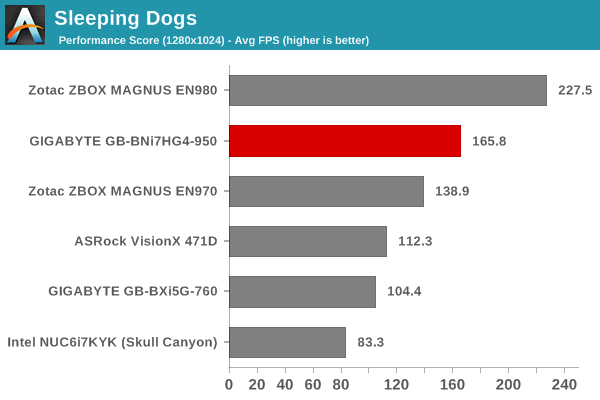
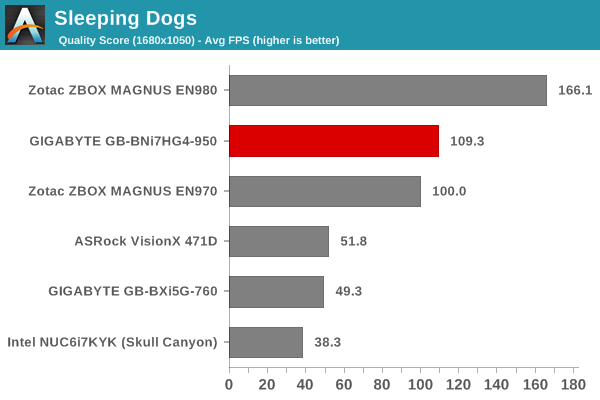
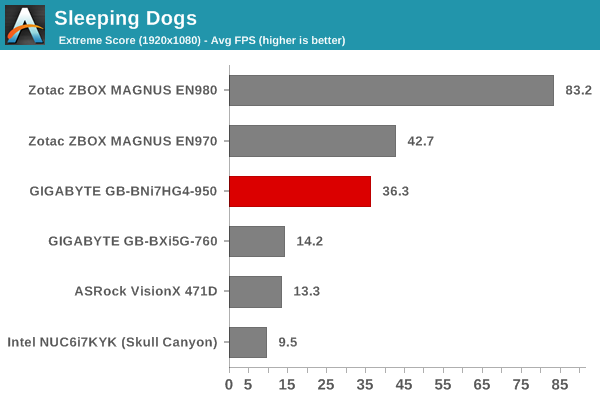
Tomb Raider
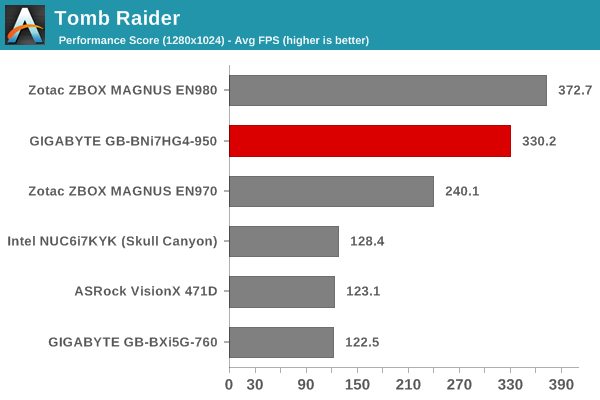
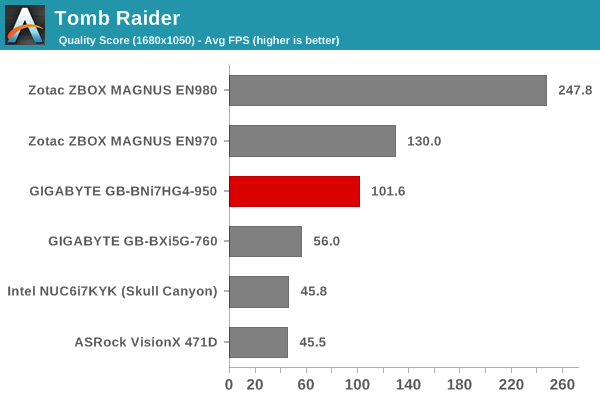
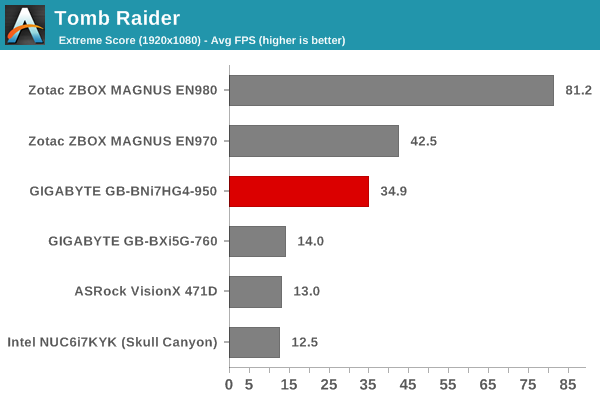
Bioshock Infinite
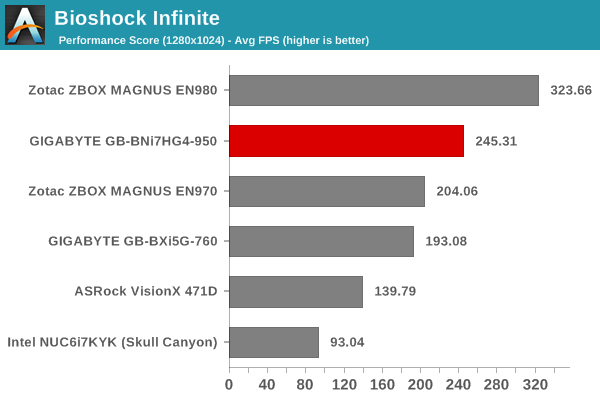

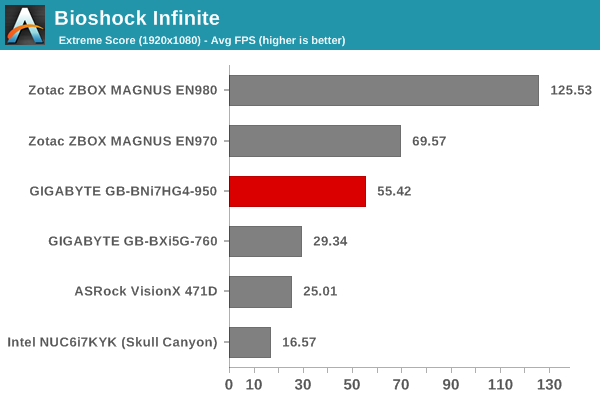
DiRT Showdown
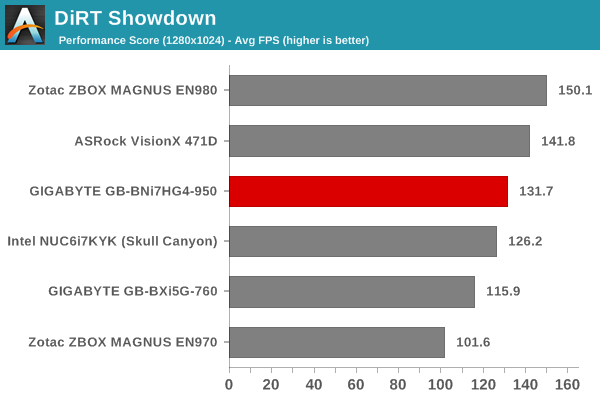
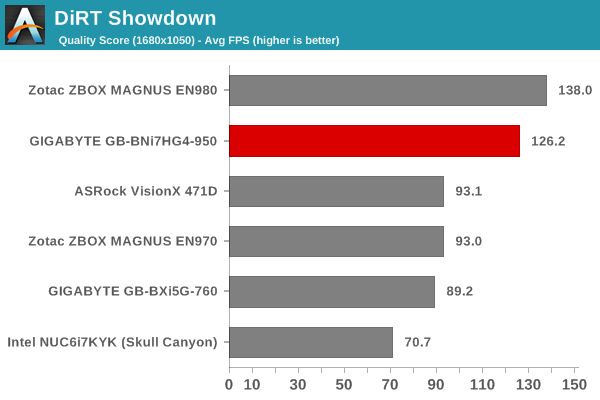
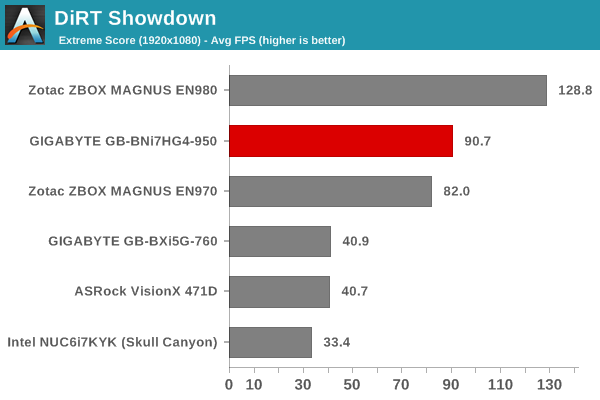
The Talos Principle
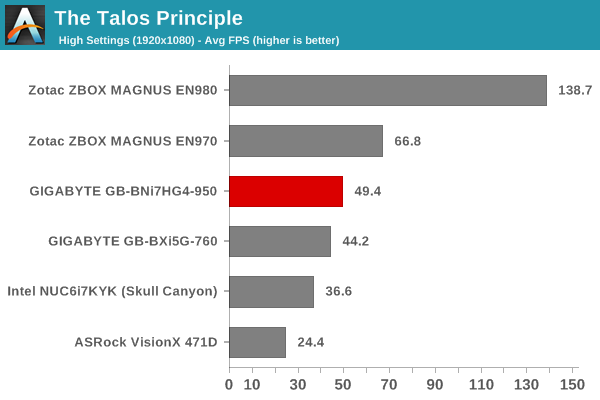
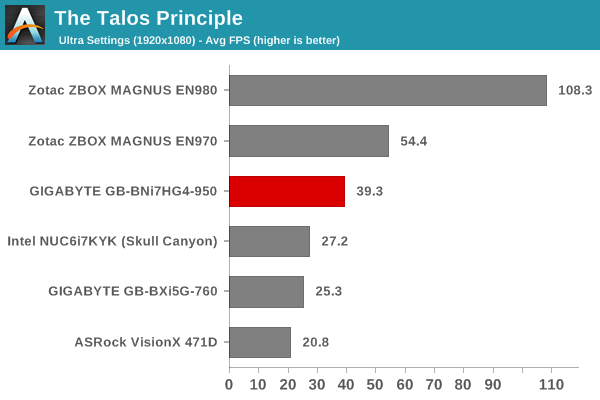
GRID Autosport
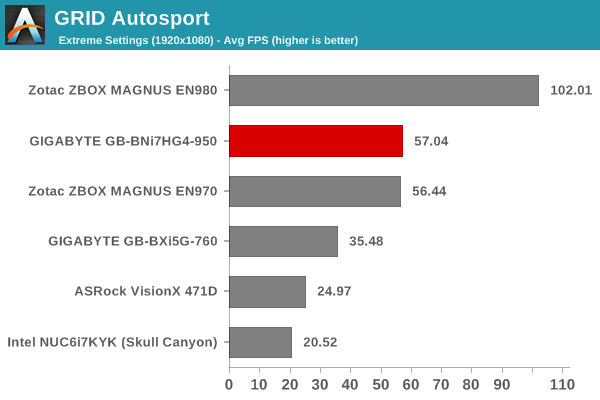
The GTX 980-equipped Zotac ZBOX MAGNUS EN980 easily wins all the benchmarks. The 'GTX 950' / 'GTX 965M' comes second in most benches, except a few where the GTX 970M-equipped Zotac ZBOX MAGNUS EN970 comes out in front. That ZBOX is hobbled on the CPU-side by a U-series processor, which is probably the reason why the 965M-based BRIX is able to surpass its performance in most games.


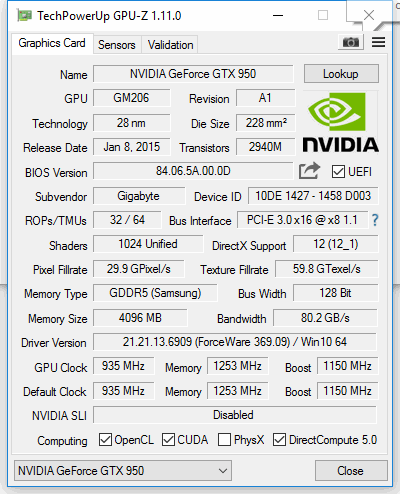








50 Comments
View All Comments
StevoLincolnite - Friday, October 28, 2016 - link
nVidia must be giving these GPU's away. Such a missed opportunity not going with Pascal.aj654987 - Wednesday, November 2, 2016 - link
Alienware Alpha r2 with the gtx 960 desktop GPU is a better deal than this.Samus - Wednesday, November 2, 2016 - link
I don't think you can get an i7 in the Alpha r2...not that it really matters for gaming, but the extra horsepower of the i7-6700HQ in the Brix might help its GTX950 creep up on the GTX960 in the Alpha r2.But I agree, they are similar in almost every other aspect (even size) and the Alpha r2 is cheaper.
setzer - Friday, October 28, 2016 - link
Regarding the last comment about going with the Skull Canyon NUC + External GPU.I'm not sure that is really a better solution.
It's true that it gives the user the option of adding more graphics power (and easy upgradability), on the other side it also requires buying a discrete graphics card which is not as straight-forward as on desktops. This is because you are restricted on one side by the soldered CPU (which you can not change, thought the Skull Canyon NUC cpu should not be a problem for some time) and on another side by the bandwidth between the system and the external enclosure (just 4 lanes of PCIE 3.0 bandwidth).
This last point makes it hard to figure out on what graphics card is actually the best for your restrictions. So instead of a selection of all the graphics cards up to the power limit of the enclosure you have to figure out which ones do actually offer the best price-performance. I.e of course you can drop a Titan there but will the difference to a GTX 965M (over the 16 lanes of PCIE) be significant?
Regarding this last point, would it be possible to test external enclosures and figure out actual metrics for the performance gains?
wavetrex - Friday, October 28, 2016 - link
I wonder if I can build a house out of these bricks ... excuse me, Brix :)Joking aside, very few people would know it's an actual computer.
nico_mach - Monday, October 31, 2016 - link
It's a SQUARE trash can! Progress! Where's the pedal, tho?hubick - Friday, October 28, 2016 - link
I'm typing this on my Skull Canyon NUC, and have a Razer Core, and having read the benchmarks before buying, the PCIe4x limitation is surprisingly small. IIRC, it's somewhere in the ballpark of 10-15% or so, and that doesn't really change when going from a 980's to a 1080 either. It makes sense when you think about it... you're essentially transferring textures, shaders, and a bunch of vector information to the GPU for rendering... and that will be pretty much constant regardless of if you're rendering the output at 720@30hz or 4K@60hz.aj654987 - Wednesday, November 2, 2016 - link
why would you even bother with that, might as well build an itx for less money and less clutter.hojnikb - Friday, October 28, 2016 - link
Guys, are there any passive mini pcs coming out with kaby lake ?TheinsanegamerN - Friday, October 28, 2016 - link
there are no PCs period with kaby lake yet. kaby lake isnt out yet.